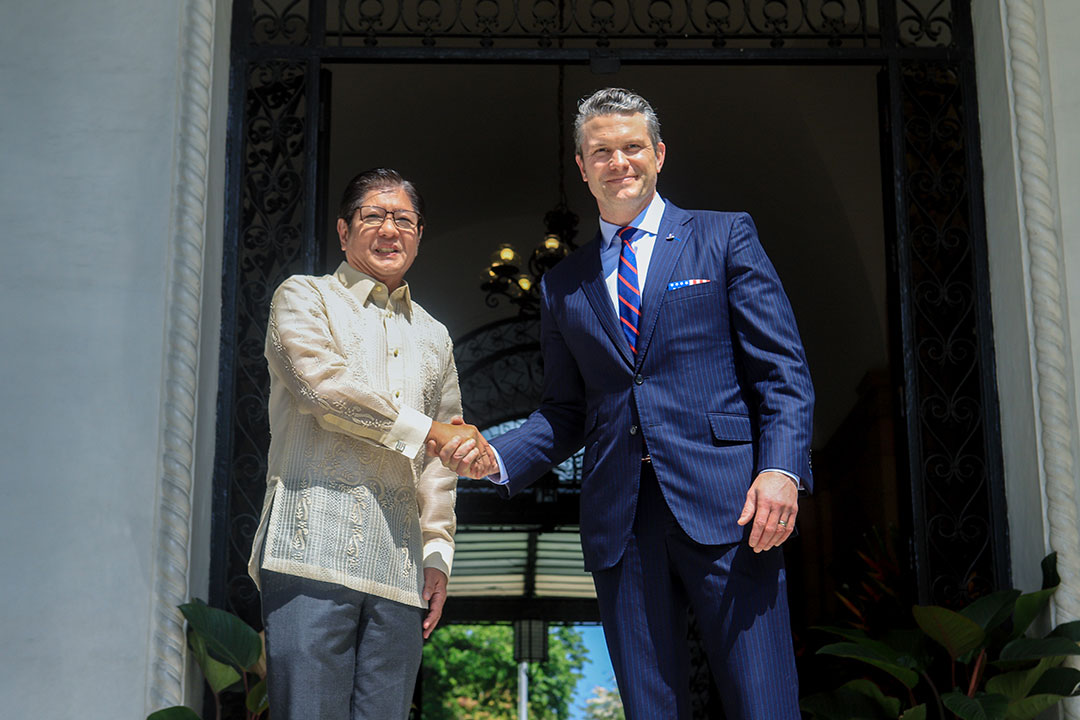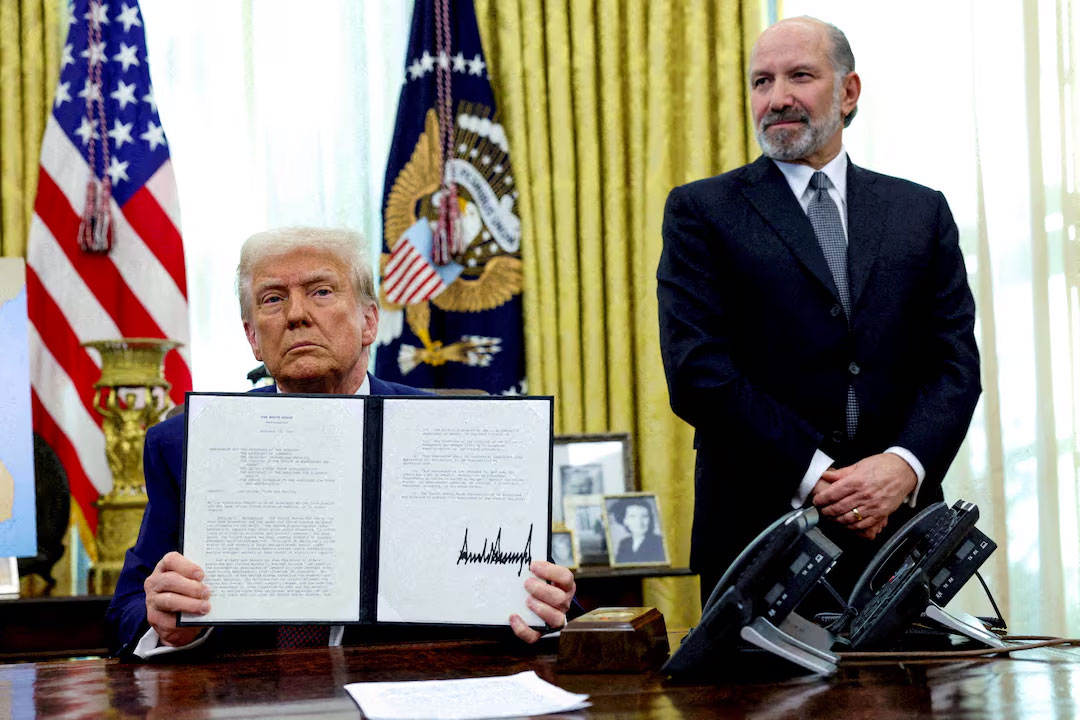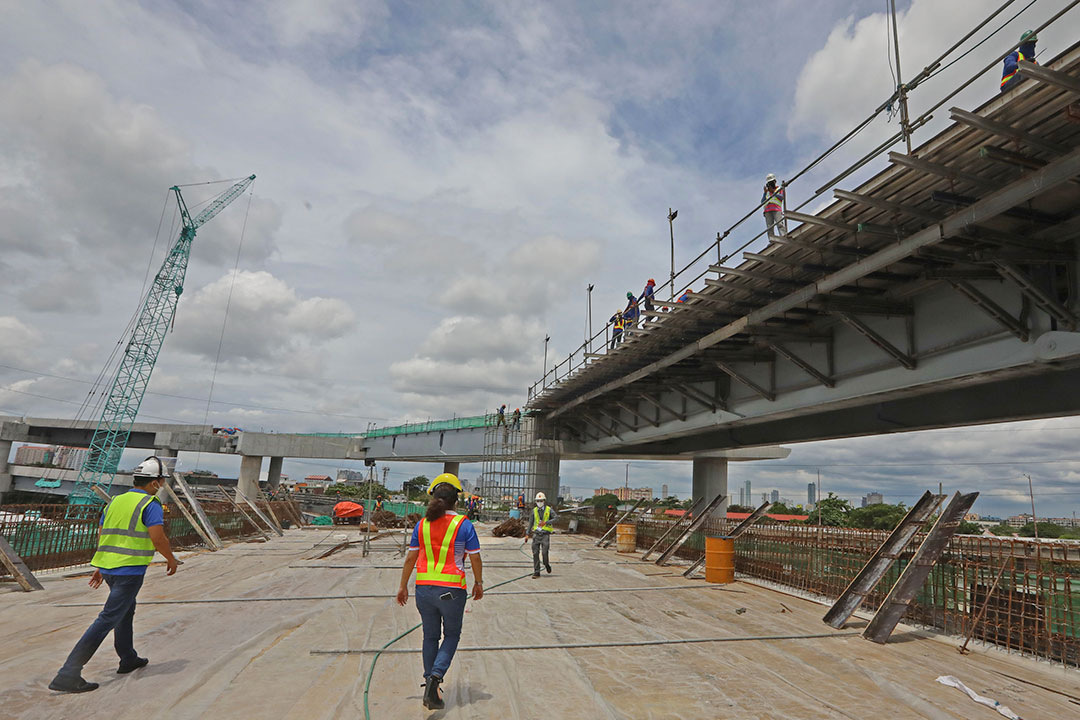
Upgrade to High-Speed Internet for only ₱1499/month!
Enjoy up to 100 Mbps fiber broadband, perfect for browsing, streaming, and gaming.
Visit Suniway.ph to learn
 PHILIPPINE STAR/NOEL PABALATE
PHILIPPINE STAR/NOEL PABALATEBy John Victor D. Ordoñez, Reporter
THE PHILIPPINES needs to strike a balance in preserving its diplomatic and trade ties with China amid Manila’s pursuit of stronger military ties with the United States or risk economic arm-twisting from its neighbor, according to a security analyst.
This comes after US Defense Secretary Peter Brian Hegseth reaffirmed Washington’s ironclad commitment to boosting deterrence efforts with Manila “considering threats from the communist Chinese.”
The US Defense chief met with his Philippine counterpart Gilberto Eduardo Gerardo C. Teodoro, Jr. and Philippine President Ferdinand R. Marcos, Jr. on March 28 to discuss continued cooperation on keeping the peace in the Indo-Pacific region and the South China Sea.
“We cannot afford to see China as an enemy just to boost our ties with the United States,” Edwin S. Estrada, who teaches international relations and specializes in national security studies at the De La Salle College of Saint Benilde School of Diplomacy and Governance, told BusinessWorld in an interview.
“China could retaliate if it wanted to. Not just militarily, but maybe using its economic power, economic clout.”
The Chinese Foreign Ministry last week urged the Philippines to stop “serving as other countries’ mouthpiece and more stunts for personal political agenda” ahead of Mr. Hegseth’s visit.
Beijing bankrolled about 233 projects in the Philippines between 2000 and 2022 worth $9.1 billion, according to a 2024 study by Virginia-based research group AidData.
The Marcos government has withdrawn loan negotiations with China for the P142-billion South Long-Haul project in the Bicol Region, the P50-billion Subic-Clark Railway project, and the first phase of the Mindanao Railway project worth P36 billion.
“Despite the second Trump administration’s sort of ‘inwardness’ in terms of current national and foreign policy priorities, it still does not forget to pursue and protect its interests overseas, especially when it concerns their trading with partners in the Indo-Pacific,” Josue Raphael J. Cortez, who teaches diplomacy at De La Salle College of St. Benilde, said in a Facebook Messenger chat.
At a joint press conference on March 28 with Mr. Teodoro, Mr. Hegseth said Washington was rebuilding its military under US President Donald J. Trump and that it will stand with its allies amid threats to regional peace.
The Chinese Foreign Ministry accused the US of “indulging its allies in provocations in the South China Sea” and having “repeatedly fabricated false propositions about China’s threat to freedom,” ministry spokesperson Guo Jiakun told a news briefing in Bejing that same day.
The US Defense chief’s trip to the Philippines comes on the heels of his tour to Hawaii and Guam, where he met military leaders overseeing the Pacific region. He traveled to Japan after his Philippine visit and will fly to another Asian ally of the US that has been at odds with China over Senkaku Islands.
Manila has been at the forefront of efforts to contest Beijing’s expansive sea claim, deepening security ties with Western countries and regional allies like Japan and Australia.
More than $3 trillion worth of trade passes yearly through the sea, which China claims almost in its entirety. A United Nations-backed tribunal in 2016 voided its claim for being illegal.
Philippine and US army soldiers on March 24 started three weeks of joint military exercises that focus on territorial defense and commanding large-scale deployment of forces.
“It’s an option for any state who still is in the process of modernizing its military to strengthen its defense partnerships with allies,” Mr. Estrada said.
“It is but natural for the Philippines to strengthen its defense partnership with the US while modernizing its military in order to, let’s say, be prepared in the event of any untoward incidents that would impinge on its sovereignty and territorial integrity.”
The People’s Daily, the newspaper of the governing Communist Party, has urged the Philippines to give up the Typhon missile system, which was deployed by US forces to the Philippines in April last year as part of joint military exercises to keep the peace in the region.
Mr. Marcos earlier said he was willing to pull out the US Typhon missile system once China stops its aggression in the South China Sea.
“One can easily speculate that these (Typhon missile) deployments are yes, part and parcel of American positioning within the region come what may,
“But is also a game that majority of the developing world opts to play with the fear that noncompliance or cooperation may affect their political and economic ties with Washington.”
Washington’s military has moved its Typhon launchers, which can fire multipurpose missiles up to thousands of kilometers, from Laoag airfield to another location on the island of Luzon, Reuters earlier reported.
The Philippines also secured an exemption from the 90-day funding freeze that Mr. Trump ordered in January so it could receive $336 million for the modernization of its security forces.
“It’s always an issue of security when missiles were placed very near your territory,” Mr. Estrada said.
“So China will closely monitor the developments between our defense partnership with the US and China definitely will release more pronouncements condemning it, giving a warning.”




